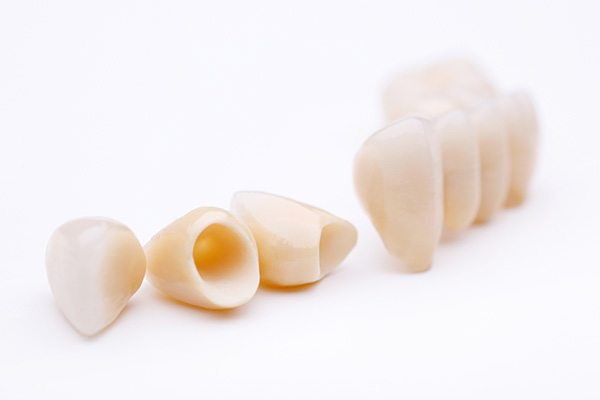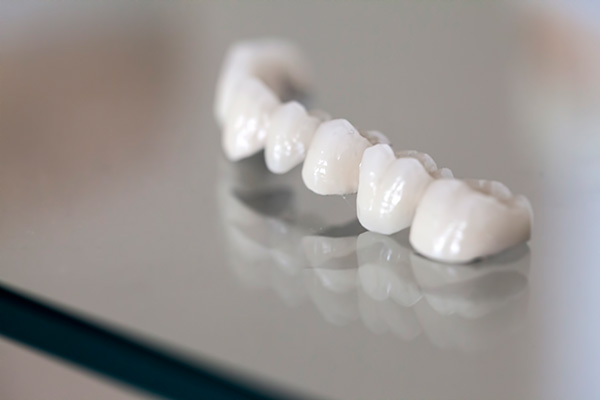Dental Crown and bridge by Phuket Prosthodontists
When you will need a Dental Crown
- You have a severely decay, where remaining tooth structure could not support natural bite and chew
- You have done root canal treatment, leaving a weakened tooth which has a high probability to get fractured without a crown on top
- You have a discolored or irregular tooth that would like to cover it up by crown to improve aesthetics
- You have a missing gap, and would like to restore it by multiple unit crowns connecting the missing gap with 2 natural teeth nearby (OR normally named Dental Bridge)
- You have already finish the first stage of dental implant--- implant surgery. After 3-6 months healing period, you now could put a crown on the implant.
Dental Crown Materials
Dental Crown could generally categorized by three types
1. All Ceramic/ Porcelain crown
Pros : Most naturally looking
Cons : Not as durable as full metal/PFM crown
2. Full Metal / Gold crown
Pros : Very Strong, can deal with hard chew and bite
Cons : The metal/gold appearance might not fit patients aesthetic requirment
3. Porcelain-fused to metal (PFM) crown
Pros : A balance choice for both strength and aesthetics
Cons : The inner metal part could be shown if patient suffer gum recession
Crown on natural tooth procedure
First evaluation and crowns tooth preparation
- Local anesthesia is first injected at the region for crown tooth preparation
- The natural tooth is reshaped to receive the new dental crown
- Records are taken and approved with the patient to determine the color, bite, length and shape of the crown
- An impression is taken for a replica model of the teeth
- This model is sent to a lab where the individual personal crown is fabricated
- A temporary crown is placed on whilst the permanent crown is made
Fitting of crowns on delivery
- The temporary crown is removedC
- The permanent crown is fitted and cemented into place on the teeth
- A quality assurance check is done for any re-adjustments or re-works of the dental crowns
Post care for Dental Crown
1. Avoiding chewing hard food on the crown within first 24 hours after the fitting
2. Rinse with salt water three times a day to help with swelling
3. Remain a good oral hygiene to maintain tissue compatibility
4. It is normal to have sensitivity over few days to weeks after the procedure. If sensitivity are found.
a. Avoid hot, cold and acidic food and drinks
b. Take pain medication to relief symptom, please consult with dentist or doctor for which type of pain medication to be taken based on your current condition.
c. Use fluoride toothpaste and mouthwash
d. Remain a good oral hygiene
Dental Bridge
Dental Bridge work very similar to Dental Crown. However, Dental Bridge aims at restoring a miss gap (Area where a tooth loss) by having several unit of crowns linking to each other, including the miss gap.
Type of Dental Bridge
1. Traditional bridges: Traditional bridges work by connecting crowns, either on natural teeth or on Implant, on each side with a pontic in between to restore the missing gap.
2. Cantilever Bridges: Think is of bridges would be used where the is only one adjacent tooth on one side of the missing gap.
3. Maryland Bridges: Instead of linking the Pontic by crowns connection to each side. Maryland Bridge uses a metal wing instead. The Metal wing would be clued at the back of the two surrounding natural teeth as a support.
Dental Bridge procedure
First evaluation and crowns tooth preparation
- Local anesthesia is first injected at the region for crown tooth preparation.
- The supporting natural teeth on the side are reshaped to receive the new dental bridge.
- Records are taken and approved with the patient to determine the color, bite, length and shape of the crowns.
- An impression is taken for a replica model of the teeth.
- This model is sent to a lab where the individual personal crown is fabricated.
- Temporary crowns on the supporting teeth are placed on whilst the permanent bridge is made.
Fitting of bridge on delivery
- The temporary crowns are removed
- The permanent bridge is fitted and cemented into place on the teeth
- A quality assurance check is done for any re-adjustments or re-works of the dental bridge
Post care of Dental Bridge
Apart from the standard oral care suggest as crown (Link to above : Post care of Dental Crown)
Since the Pontic unit has a space between the gum, food could be stuck in sometimes, some extra care would be suggested as below:
1. Brush after eating and before bedtime around the bridge with a soft toothbrush, especially where the bridge meets the gum line. At the gum line harmful bacteria can be harbored to cause decay and gum disease.
2. Floss at least once to twice a day. Use the proxy brush or floss threader to remove plaque under and around these areas to maintain good oral hygiene. Buildup of food debris and plaque on your teeth and gums can become infected.
3. Rinse with fluoride rinse before bed. Swish the fluoride rinse vigorously in your mouth for at least one minute. Do not swallow any of the rinse and do not eat or drink anything for 30 minutes
4. Be careful about chewing toffees, gum, grainy rolls and tough food in this area
5. See your dentist for regular professional check-ups and cleanings

Professional & Superb
Mr James

My Treatment was Excellent!
Mr. Gregory


